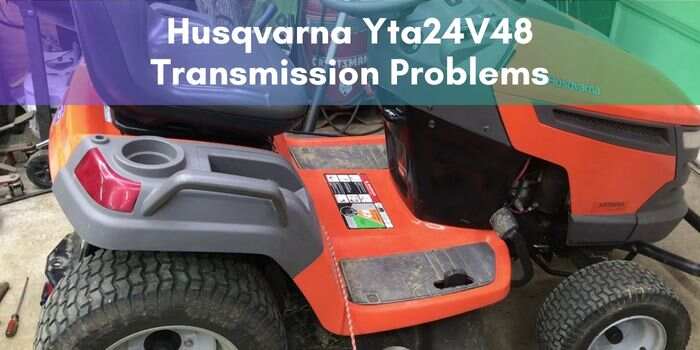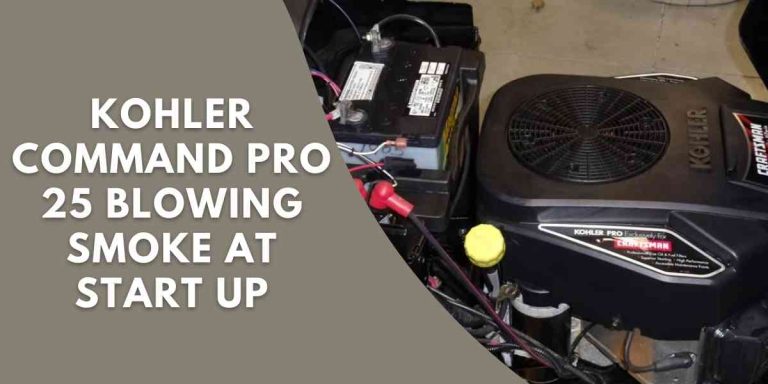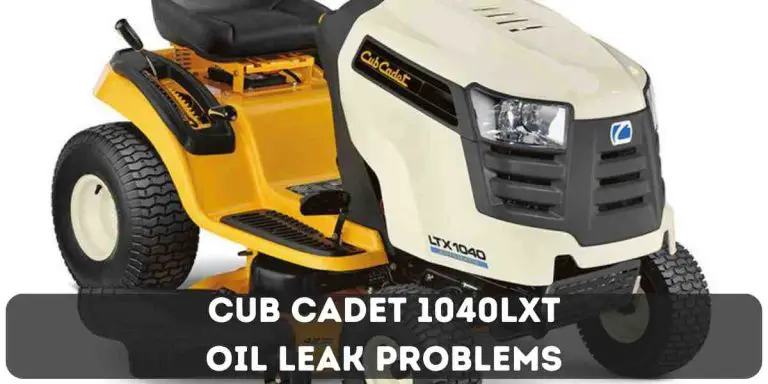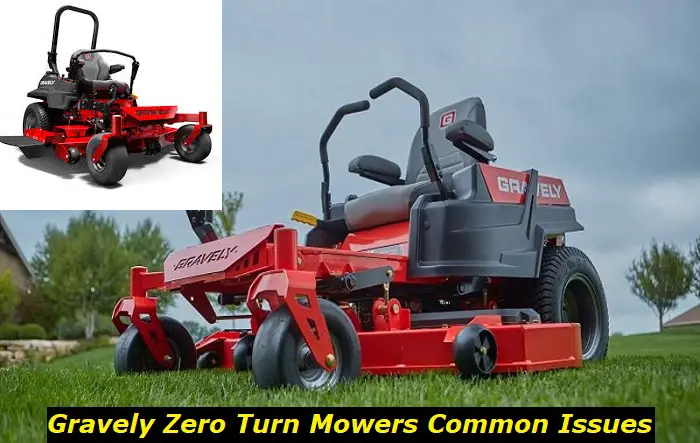Husqvarna Yta24V48 Transmission Problems: Troubleshooting Solutions
Husqvarna Yta24V48 may experience transmission problems such as grinding gears, starting and stopping during operation, and wheels not rotating with the pulley, indicating a breakdown in the mower’s transmission.
Additionally, if the system is purged and the problem persists, it’s recommended to visually check the hydraulic system, inspect the oil level and make necessary additions, and inspect hoses and connections for damage or signs of leaks.
Using 10W/30 oil is recommended for the Husqvarna hydrostatic transmission.
Common Signs Of Transmission Problems
If your Husqvarna Yta24V48 is experiencing transmission problems, there are common signs to watch out for.
These include grinding gears, starting and stopping during operation, and the wheels not rotating with the pulley. If you notice any of these issues, it may indicate that your mower’s transmission is breaking down.
Grinding gears:
- Grinding noise when changing gears
- Difficulty shifting gears smoothly
- Gears slipping or not engaging properly
Starting and stopping during operation:
- Mower suddenly stopping or slowing down while in use
- Inconsistent speed while operating the mower
- Mower hesitating before starting or engaging
Wheels not rotating with the pulley:
- Wheels not moving even when the drive belt is engaged
- Mower not moving forward or backward despite the engine running
- Lack of traction or power when using the mower
Remember, these are common signs of transmission problems in a Husqvarna YTA24V48 riding mower.
Diagnosing A Bad Hydrostatic Transmission
If your Husqvarna Yta24V48 mower is experiencing transmission problems, there are a few signs to look out for. These include grinding gears, starting and stopping during operation, and the wheels not rotating with the pulley.
To diagnose a bad hydrostatic transmission, conduct a visual check of the hydraulic system, inspect the oil level and connections for damage or leaks, and add oil if needed.
Is your Husqvarna Yta24V48 experiencing transmission problems? One common issue could be a bad hydrostatic transmission. Diagnosing this problem requires a systematic approach to determine the root cause.
Here are some steps you can follow to diagnose a bad hydrostatic transmission:
Visual Check Of The Hydraulic System:
- Inspect the hydraulic system for any visible signs of damage or leaks.
- Look for loose or disconnected hoses and connections.
- Ensure that all components are securely mounted and in good condition.
Checking The Oil Level And Adding Oil If Needed:
- Start by checking the oil level in the transmission.
- Locate the transmission fill plug and remove it.
- Use a dipstick or sight glass (if available) to check the oil level.
- If the oil level is low, add the recommended oil as per the manufacturer’s instructions.
Inspecting Hoses And Connections For Damage Or Leaks:
- Carefully inspect all hoses and connections for any signs of damage, such as cracks or leaks.
- Check for loose connections or fittings that may be causing fluid loss.
- Tighten loose connections or replace damaged hoses to prevent further issues.
Remember, if you’re not comfortable diagnosing or repairing the hydrostatic transmission yourself, it’s always best to consult a professional. They have the knowledge and expertise to accurately diagnose and fix the problem for you.
Solutions For Husqvarna Yta24V48 Transmission Problems
Experience transmission problems with your Husqvarna Yta24V48? Don’t worry! Learn how to diagnose and fix common issues like grinding gears and wheels not rotating. C
Is your Husqvarna Yta24V48 experiencing transmission issues? Don’t worry, we’ve got you covered.
In this section, we will discuss some common solutions to help address transmission problems with your Husqvarna Yta24V48. Follow these steps to troubleshoot and resolve any issues you may be facing.
Re-Installing The Brake Pedal:
- Check if the brake pedal is properly attached and functioning correctly.
- Ensure that the brake pedal is aligned with the brake arm.
- Tighten any loose bolts or screws on the brake pedal assembly.
- Test the brake pedal by pressing it down and ensuring it engages smoothly.
Belt Inspection And Examination For Damage:
- Visually inspect the drive belt for any signs of wear, fraying, or damage.
- Check for any debris or obstructions that may be affecting the belt’s performance.
- Ensure that the belt is properly tensioned and correctly installed on the pulleys.
- Replace the belt if any significant damage or wear is detected.
Checking The Pulleys:
- Inspect the pulleys for any signs of damage or wear.
- Ensure that the pulleys are aligned and functioning smoothly.
- Check for any debris or obstructions that may be affecting the pulleys’ rotation.
- Tighten any loose bolts or screws on the pulley assembly.
Testing And Checking The Belt:
- Perform a tension test on the drive belt to ensure it is properly tensioned.
- Check for any slipping or excessive wear on the belt.
- Verify that the belt is correctly aligned and seated on the pulleys.
- Replace the belt if it fails any of the above tests or if significant wear is present.
Cleaning The Transmission:
- Remove any dirt, debris, or grass clippings from the transmission area.
- Use a soft brush or cloth to clean the transmission components.
- Avoid using high-pressure water or harsh chemicals that may damage the transmission.
- Regularly clean the transmission to prevent build-up and ensure optimal performance.
Draining And Refilling The Transmission Fluid:
- Locate the transmission fluid drain and fill plugs.
- Place a suitable container under the drain plug to collect the fluid.
- Remove the drain plug and allow the fluid to completely drain out.
- Replace the drain plug and refill the transmission with the recommended fluid.
Reassembly And Final Testing:
- Reassemble any components that had been removed during the troubleshooting process.
- Double-check all connections and ensure everything is properly secured and tightened.
- Test the mower to verify that the transmission issues have been resolved.
- Monitor the mower’s performance to ensure smooth operation and no further problems.
Remember to always refer to the manufacturer’s manual for specific instructions and guidelines. Keep your mower well-maintained to prevent future issues and enjoy optimal performance.
Frequently Asked Questions
What Transmission Is In A Yta24V48?
The transmission in a yta24v48 is a hydrostatic transmission.
How Do I Know If My Lawnmower Transmission Is Bad?
If your lawnmower transmission is bad, you may notice grinding gears, starting and stopping during operation, and the wheels not rotating with the pulley.
How Do You Diagnose A Bad Hydrostatic Transmission?
To diagnose a bad hydrostatic transmission, follow these steps: 1. Do a visual check of the hydraulic system, inspecting the oil level and hoses for damage or leaks. 2. Add oil if necessary to maintain proper levels. 3. Check the connections for any signs of damage or leaks.
4. If the problem persists after these checks, further troubleshooting may be required.
What Oil Goes In A Husqvarna Hydrostatic Transmission?
Husqvarna recommends a specific 10W-30 transmission oil formulated for hydrostatic transmissions in their lawn mowers. This oil is designed to provide optimal lubrication and performance under various operating conditions. It also contains friction modifiers that help ensure smooth operation of the transmission.
Conclusion
To summarize, if you are experiencing transmission problems with your Husqvarna YTA24V48 lawnmower, there are several steps you can take to diagnose and fix the issue. Some common signs of a faulty transmission include grinding gears, starting and stopping during operation, and the wheels not rotating with the pulley.
Proper troubleshooting includes checking the oil level and adding oil if needed, inspecting hoses and connections for damage or leaks, and examining the drive belt and pulleys. Additionally, cleaning and draining the transmission fluid may be necessary. It is important to follow the manufacturer’s guidelines and use the recommended oil, such as 10W/30, for the hydrostatic transmission.
By following these steps and understanding how the hydrostatic transmission works, you can address any transmission problems and ensure smooth operation of your Husqvarna YTA24V48 lawnmower.





